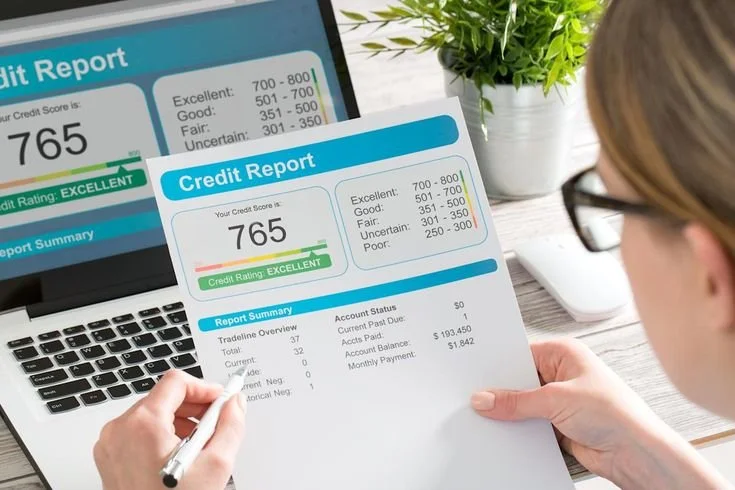7 Smart Moves to Rebuild Your Credit
In today’s world, good credit is more than a number. It affects our mortgage rates, car loans, and even apartment rentals. Fortunately, a few strategic habits can get your score back on track—no magic involved.
1. Start with Clarity: Get Your Credit Report
First, you need to know where you stand. Request your free credit report from each of the three major bureaus once per year. Then, review each report carefully to spot errors or outdated marks because even small mistakes can drag your score down. Also, you might spot unrecognized or fraudulent charges. Consequently, this first step gives you the roadmap to improvement.
2. Consistently Pay on Time
Next, on-time payments matter most for a healthy credit score. In fact, payment history makes up roughly 35% of your credit calculation. So, set reminders or enable autopay for your bills. However, double-check your accounts regularly. Otherwise, payment changes (like increased minimums) can lead to missed due dates without your knowledge. Meanwhile, paying your full balance monthly helps avoid interest and builds credit responsibly.
3. Monitor Your Credit Regularly
Meanwhile, keeping an eye on your credit ensures surprises don’t catch you off guard. For instance, alerts for new accounts or inquiries can highlight identity theft quickly. Therefore, invest in a simple monitoring service—or use free tools provided by your bank or credit card company. Then, you’ll get notified promptly of any changes that might affect your standing.
4. Rethink Your Spending Choices
Furthermore, high credit utilization — using more than 30% of available credit — can hurt your score. Consequently, reduce unnecessary purchases via credit cards. Also, downsize impulse buys like daily coffee runs or online splurges. Alternatively, stash your cards somewhere less visible. That way, you resist temptation and maintain responsible spending habits.
5. Hold Onto Old Accounts
In addition, your credit history length plays a big role. Rather than closing old cards, keep them open—especially those without annual fees. Thus, you maintain a longer average history and healthier utilization ratio. Meanwhile, avoid new accounts that you don’t need. Instead, let your existing accounts quietly support your credit over time.
6. Give It Time: Don't Rush Results
Also, know that recovery doesn’t happen overnight. Because credit scoring factors like age of accounts and total history take months—or even years—to improve. Consequently, patience and consistency become your best allies. Even a single late payment can linger, so gradual progress matters. Meanwhile, focus on building habits that last.
7. Seek Support When You Need It
Finally, know you don’t have to go it alone. Although DIY credit repair is possible, professional help may simplify the process for more complex cases. In fact, credit repair services can negotiate with bureaus, remove inaccurate information, and guide you step by step. Still, be sure to vet any provider carefully for ratings, fees, and track record. Ultimately, support can accelerate progress, but your commitment remains key.
Why These Steps Work Together
Summing up, this seven-part approach tackles credit from every angle:
Awareness through review,
Responsibility for timely payments,
Protection via monitoring,
Restraint in spending,
Wisdom in keeping old accounts,
Patience to allow recovery, and
Assistance when needed.
Together, these habits restore your credit health and open doors to better financing and peace of mind.
A Personal Perspective
I nearly suffered a major setback two years ago. Then, a card on autopay raised its minimum without notice. Although I paid earlier amounts, the new lower payment went unnoticed—causing a late flag. Consequently, my credit dropped more than 60 points. However, I recovered my score through diligence: I paid on time, kept old cards open, and watched my credit actively. Now, I’m back near 750.
A Maintenance Checklist
Here’s a simple weekly and monthly routine to sustain progress:
Weekly: Review account balances and due dates.
Monthly: Check your score and look for odd activity.
Quarterly: Pull your free annual report from one bureau (rotate through them).
Annually: Consider professional review if problems persist or you’ve experienced identity theft.
Final Thoughts
Ultimately, improving your credit is much like rebuilding trust—with consistency and care. Because every payment, every open account, and every smart choice adds up. So, start today by checking your credit. Then, tackle one habit at a time. Before long, you’ll look back and appreciate how far you’ve come.
Ready to begin? Commit right now to one step—and watch your credit follow.


